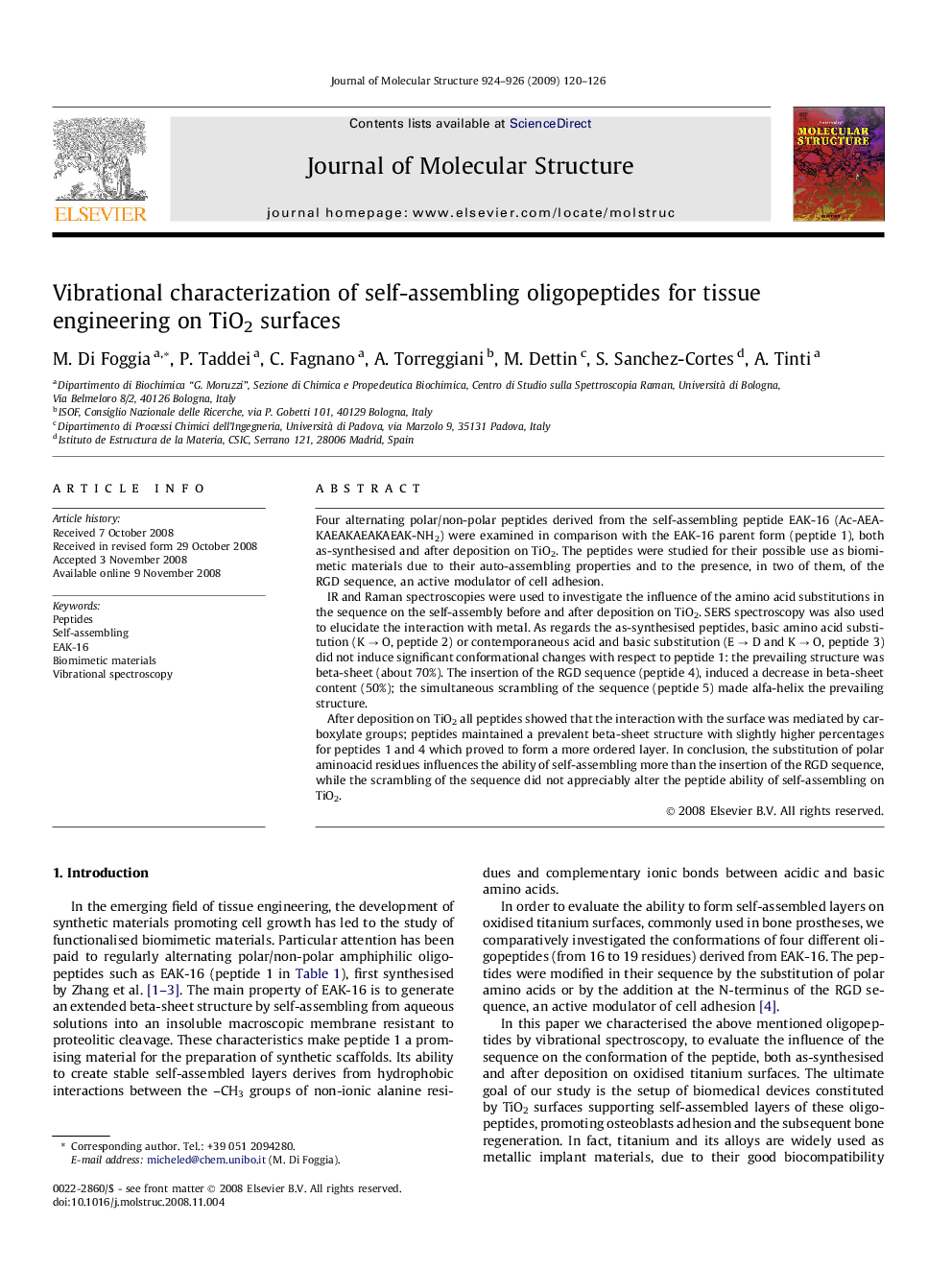| Article ID | Journal | Published Year | Pages | File Type |
|---|---|---|---|---|
| 1406631 | Journal of Molecular Structure | 2009 | 7 Pages |
Four alternating polar/non-polar peptides derived from the self-assembling peptide EAK-16 (Ac-AEAKAEAKAEAKAEAK-NH2) were examined in comparison with the EAK-16 parent form (peptide 1), both as-synthesised and after deposition on TiO2. The peptides were studied for their possible use as biomimetic materials due to their auto-assembling properties and to the presence, in two of them, of the RGD sequence, an active modulator of cell adhesion.IR and Raman spectroscopies were used to investigate the influence of the amino acid substitutions in the sequence on the self-assembly before and after deposition on TiO2. SERS spectroscopy was also used to elucidate the interaction with metal. As regards the as-synthesised peptides, basic amino acid substitution (K → O, peptide 2) or contemporaneous acid and basic substitution (E → D and K → O, peptide 3) did not induce significant conformational changes with respect to peptide 1: the prevailing structure was beta-sheet (about 70%). The insertion of the RGD sequence (peptide 4), induced a decrease in beta-sheet content (50%); the simultaneous scrambling of the sequence (peptide 5) made alfa-helix the prevailing structure.After deposition on TiO2 all peptides showed that the interaction with the surface was mediated by carboxylate groups; peptides maintained a prevalent beta-sheet structure with slightly higher percentages for peptides 1 and 4 which proved to form a more ordered layer. In conclusion, the substitution of polar aminoacid residues influences the ability of self-assembling more than the insertion of the RGD sequence, while the scrambling of the sequence did not appreciably alter the peptide ability of self-assembling on TiO2.
